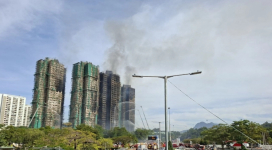The increase of broadband users in the United States is evidenced by the increasing employment of high-speed Internet lines. Last year alone, the amount of high-speed Internet lines increased by 42 percent making service available in 93 percent of the nation’s ZIP codes. To accelerate this growth, the USDA is bringing broadband connections to the less internet-savvy parts of rural America.
According to a semiannual report by the Federal Communications Commission 28.2 million homes and business use high-speed lines. Of that number, 58 percent is made up of cable lines and 34 percent DSL.
Most of the country has the luxury to choose from at least two companies providing service. 78 percent of the nation’s ZIP codes have at least two ISP’s while 11 percent had more than ten.
On the other hand, 7 percent of the ZIP codes provide no high-speed service at all. States like South Dakota and West Virginia are way behind with over 20 percent of its ZIP codes with no broadband availability and 15 percent for Arkansas, Iowa, Montana, Nebraska and North Dakota.
Most of the ZIP codes that have no high-speed lines are made up of rural areas. The USDA is making efforts to increase broadband availability to rural America. “Advanced high-speed Internet technology enables more rural Americans to access information to improve their educational, health and business opportunities," said Agriculture Secretary Veneman. "President Bush established the goal to have broadband access to every household by 2007 because he understands the value of such technology and is committed to the idea that every American should have the opportunity to succeed."
As part of the Bush administration’s efforts to expand high-speed internet, five broadband telecommunication loans have been approved totaling $47 million dollars.







